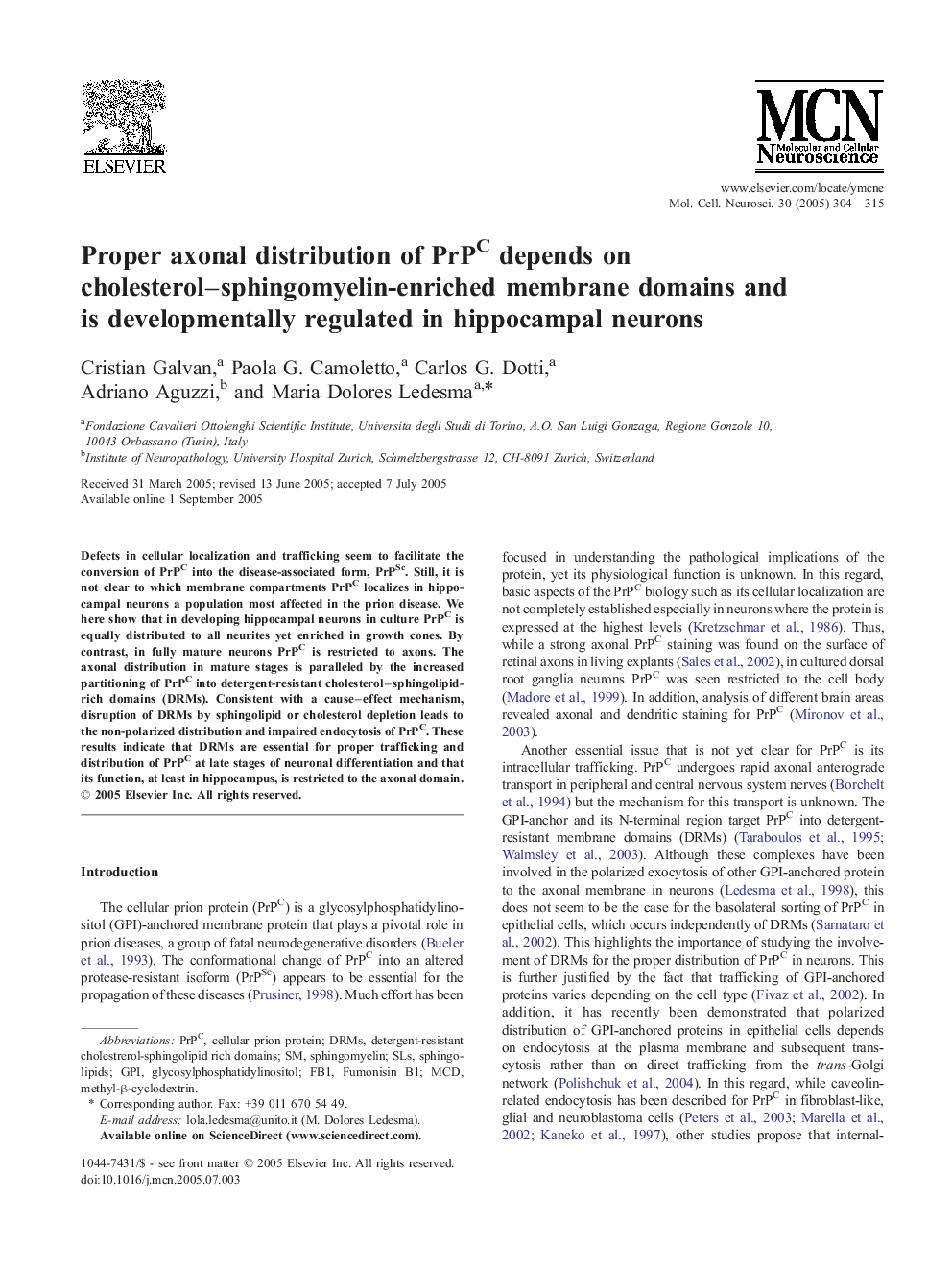| Article ID | Journal | Published Year | Pages | File Type |
|---|---|---|---|---|
| 10956800 | Molecular and Cellular Neuroscience | 2005 | 12 Pages |
Abstract
Defects in cellular localization and trafficking seem to facilitate the conversion of PrPC into the disease-associated form, PrPSc. Still, it is not clear to which membrane compartments PrPC localizes in hippocampal neurons a population most affected in the prion disease. We here show that in developing hippocampal neurons in culture PrPC is equally distributed to all neurites yet enriched in growth cones. By contrast, in fully mature neurons PrPC is restricted to axons. The axonal distribution in mature stages is paralleled by the increased partitioning of PrPC into detergent-resistant cholesterol-sphingolipid-rich domains (DRMs). Consistent with a cause-effect mechanism, disruption of DRMs by sphingolipid or cholesterol depletion leads to the non-polarized distribution and impaired endocytosis of PrPC. These results indicate that DRMs are essential for proper trafficking and distribution of PrPC at late stages of neuronal differentiation and that its function, at least in hippocampus, is restricted to the axonal domain.
Keywords
Related Topics
Life Sciences
Biochemistry, Genetics and Molecular Biology
Cell Biology
Authors
Cristian Galvan, Paola G. Camoletto, Carlos G. Dotti, Adriano Aguzzi, Maria Dolores Ledesma,
